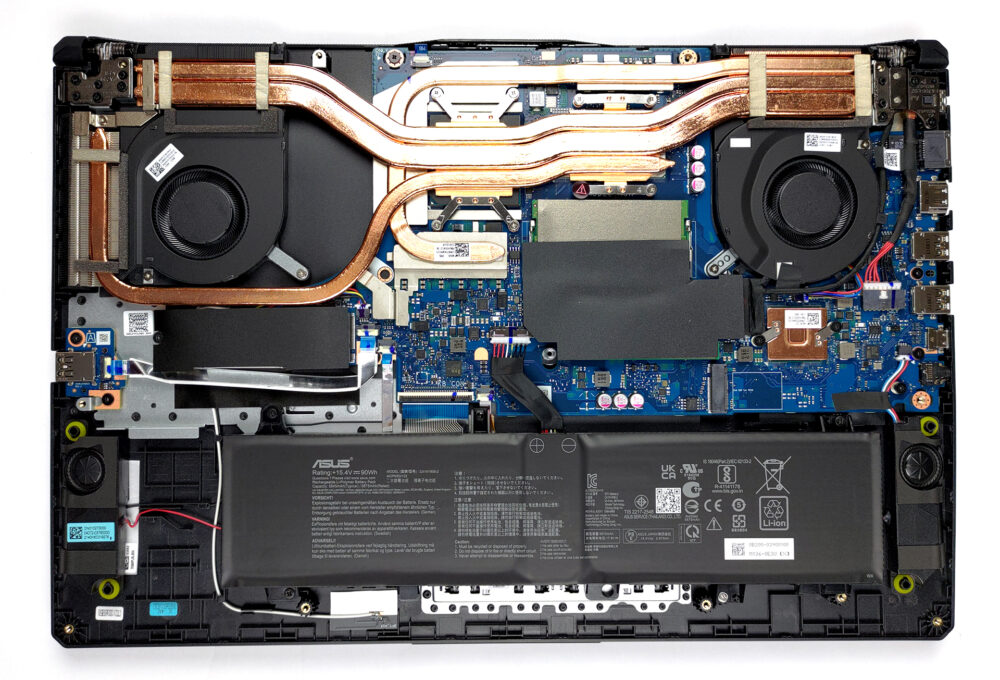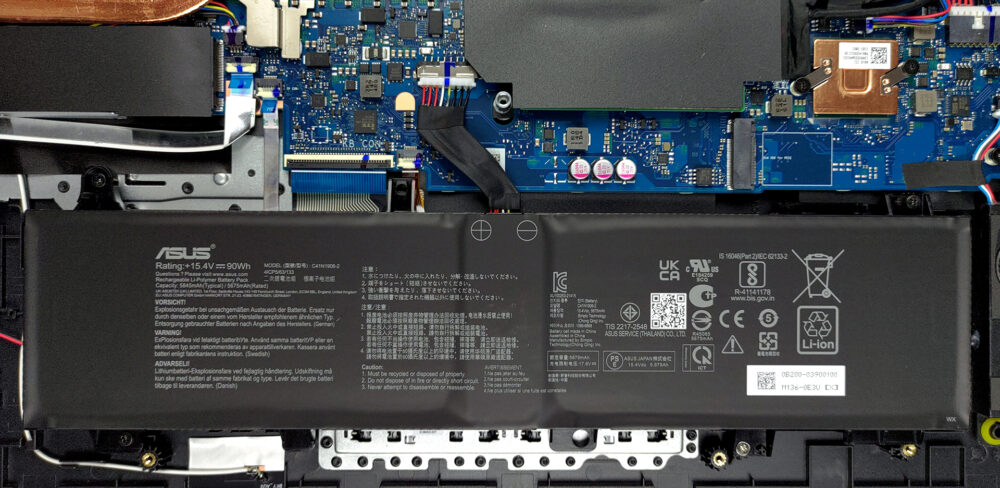ASUS TUF Gaming F17 (FX706, 2021)の内部 – 分解とアップグレードオプション
ここでは、市場で最も人気のあるゲーミングノートPCの一つをアップグレードする方法を紹介します。ゲーマーにとっても、ハードウェアの持つ圧倒的なパワーを必要とする人にとっても、かなりお得な内容となっています。
ASUS TUF Gaming F17 (FX706, 2021) のすべての価格と構成をスペックシステムでチェックするか、詳細なレビューをお読みください。
1.ボトムプレートの取り外し
このノートパソコンを分解するには、11本のプラスネジを外す必要があります。左上のネジは残っていて、底板を持ち上げることができるので、そこからこじ開けていきます。終わったら、パネルを持ち上げてシャーシから離します。
2.バッテリー
本機には、90Whのバッテリーパックが搭載されています。バッテリーパックを取り外すには、まずバッテリーコネクターを外します。その後、4つのプラスネジをすべて外せば、本機を本体から取り外すことができます。
3.メモリとストレージ
ここには、2つのSODIMMスロットが見えます。ASUSによると、最大32GBのデュアルチャネルメモリをサポートしています。2つのM.2 PCIe x4スロットがあり、そのうち1つはGen4ドライブをサポートします。
4.冷却システム
冷却面では、3本のヒートパイプをCPUとGPUの間で共有する設計になっています。4本目のヒートパイプは、グラフィックスメモリとVRMを積極的に冷却しています。
ASUS TUF Gaming F17 (FX706, 2021) のすべての価格と構成をスペックシステムでチェックするか、詳細をIn-Depth reviewでお読みください。
ASUS TUF Gaming F17 (FX706, 2021) 徹底レビュー
It wasn't long ago before we showed you the ASUS TUF Gaming F17 FX706. However, like many other manufacturers, ASUS itself has released facelifts of some of its most popular laptops. Including the FX706. Generally, it looks pretty similar, but it brings a lot of new hardware.Since it was released in 2021, you can't expect Alder Lake chips. Nevertheless, their Tiger Lake counterparts are pretty capable in both games and productivity. What else is great for gaming and productivity is the RTX 3060 GPU, which you can find inside of it. It comes with 95W of TGP, and 6GB of GDDR6 graphics memor[...]

長所
- Tough chassis
- 2x SODIMM + 2x M.2 PCIe x4 (one of which supports Gen 4 SSDs)
- 144Hz refresh rate (AUO B173HAN04.9)
- No PWM (AUO B173HAN04.9)
- Thunderbolt 4 + HDMI 2.0b (G-Sync)
- Adaptive Sync support (AUO B173HAN04.9)
- Great battery life for a gaming laptop
短所
- No SD card reader
- Covers only 51% of sRGB (AUO B173HAN04.9)















Nice review! May i ask you something? Where (in ASUS official threads or in manuals) does it says that one port can be a 4° Gen NVMe SSD? I can´t found information about the maximum frecuencies/gen of the NVMe and SO-DIMM ports 🙁 Many thanks!